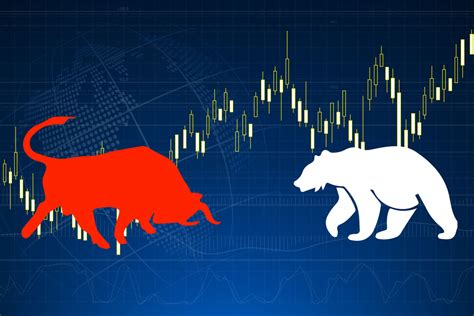
Understanding price movement in forex isn't just about charts and technical indicators. Forex sentiment plays a critical role in revealing how traders collectively feel about currency pairs, influencing short-term momentum and longer-term trends. When the market leans bullish or bearish, that emotional tilt can be spotted through positioning data, sentiment tools, and reaction patterns to economic events. Recognizing these shifts provides valuable context for trade entries, exits, and risk management decisions. Traders who learn to interpret sentiment signals often gain an edge by anticipating moves driven not just by fundamentals or patterns, but by collective psychology.
Interpreting Forex Sentiment Indicators
Understanding trader psychology begins with decoding sentiment indicators. Forex sentiment reflects a collective emotional pulse shaped by positioning, volatility, and macro responses — essential for predicting price shifts across currency pairs.
How to Read the COT Report for Forex Sentiment Analysis
The Commitment of Traders (COT) report, published weekly by the Commodity Futures Trading Commission, offers insight into how institutional players are positioned across major currency pairs like the US Dollar and Euro. By separating commercial hedgers, large speculators, and retail participants, the report reveals divergence between real money flows and speculative behavior — often a precursor to a trend reversal or continuation.
Non-commercial positions highlight risk appetite or risk aversion in institutional sentiment.
A sharp increase in long or short contracts may reflect overbought or oversold conditions.
The spread between commercial and non-commercial traders often indicates hidden market correction potential.
Weekly changes signal evolving conviction, especially when aligned with shifts in economic indicators such as GDP growth or Consumer Confidence.
Understanding COT requires not just reading numbers but interpreting the behavior they reveal — especially when supported by global cues like Interest Rate Decisions from the Federal Reserve or ECB.
Using Retail Sentiment Data: Contrarian Strategies in Action
Retail sentiment gauges how small traders are positioned in the market, typically sourced from broker data.
Most retail traders get caught on the wrong side of major Breakouts and Trend Reversals.
Contrarian traders use this imbalance to their advantage by doing the opposite of the crowd.
A high percentage of long retail positions on the Japanese Yen during heightened Policy Uncertainty may suggest a bearish outlook.
When retail sentiment diverges from institutional positioning, it often precedes market correction or volatility.
Forex Sentiment vs Market Volatility: A Symbiotic Dance
Market volatility is not just a reaction — it’s a reflection of collective psychology. During periods of high uncertainty, such as geopolitical events like Trade Wars or Elections, sentiment becomes fragile. Investors switch rapidly between bullish outlook and fear-driven risk aversion.
Forex sentiment thrives in this space. When volatility spikes, it often mirrors a sudden shift in trader mood, fueled by surprise Inflation Rate changes or unexpected Durable Goods Orders. This emotional turbulence can lead to erratic movements in major currency pairs, especially the British Pound or Swiss Franc.
Sudden reversals following major central bank moves — such as an Interest Rate Decision from the Bank of Japan — tend to create breakout volatility patterns driven by emotional reactions, not just logical fundamentals.
Understanding Positioning in Major Currency Pairs
| Currency Pair | Net Long Positions | Sentiment Signal | Recent Economic Catalyst | Central Bank in Focus |
|---|---|---|---|---|
| EUR/USD | Increasing | Bullish Outlook | Eurozone GDP Growth Surprise | European Central Bank |
| USD/JPY | Declining | Bearish Outlook | US Consumer Confidence Decline | Federal Reserve |
| GBP/USD | Mixed | Sideways Trend | UK Inflation Rate and Brexit Talks | Bank of England |
| AUD/USD | Strong Short Bias | Oversold Conditions | Weak Retail Sales in Australia | Reserve Bank of Australia |
| USD/CAD | Neutral | Low Investor Confidence | Canadian Unemployment Claims | Bank of Canada |
| NZD/USD | Speculative Longs | Risk Appetite Returning | Policy Easing Signals | Reserve Bank of New Zealand |
Positioning data, when aligned with recent macro catalysts, offers deeper insight into the emotional drivers behind currency price movement. It reflects where risk appetite is building and where fear might dominate, often foreshadowing sentiment reversals or trend breakouts.
Macroeconomic Catalysts Behind Forex Sentiment Shifts
Trader psychology doesn’t form in isolation. Forex sentiment often reacts to economic indicators, where surprise outcomes and directional shifts can trigger momentum across major currency pairs and risk-sensitive markets.
How Interest Rate Decisions Drive Sentiment Waves
Central banks like the Federal Reserve and the European Central Bank can reshape market tone with a single Interest Rate Decision. These moves affect risk appetite, especially when unexpected.
A surprise rate hike typically fuels bullish outlook for a currency — especially the US Dollar or Canadian Dollar.
A dovish stance, even without cutting rates, can create bearish outlooks and volatility in currency pairs like EUR/USD or USD/JPY.
Forward guidance is critical. When central banks project easing or tightening, forex sentiment shifts long before action occurs.
Sentiment often aligns with broader expectations on inflation and employment trends, making rate changes both reflective and predictive.
Market correction patterns often emerge when expectations misalign with the actual Interest Rate Decision.
Inflation Surprises and Their Emotional Market Fallout
The release of inflation data like CPI or PCE often comes with a psychological payload. Traders, analysts, and institutions hang on every decimal point, particularly when the numbers diverge from forecasts.
During a recent surprise spike in US inflation, risk aversion gripped markets. The US Dollar surged against Emerging Market Currencies while sentiment toward interest rate-sensitive pairs like GBP/USD turned sharply negative. Inflation, especially when tied to commodity prices or supply disruptions, often amplifies investor confidence in hawkish central bank responses.
This emotional spiral — from raw data to monetary anticipation — can create rapid sentiment reversals, exaggerated by retail reactions and derivative positioning. Forex sentiment, in such cases, is less about the number itself and more about the story the number tells.
Unemployment Claims and Trader Reaction Patterns
| Week Ending | US Unemployment Claims | EUR/USD Sentiment Shift | Currency Impact | Sentiment Character |
|---|---|---|---|---|
| March 1 | 210,000 | Bullish USD | EUR/USD drops 0.6% | Risk Appetite Declines |
| March 8 | 235,000 | Mixed | Modest rangebound reaction | Sideways Trend |
| March 15 | 180,000 | Bullish USD | Strong rally in USD/JPY | Investor Confidence Rises |
| March 22 | 260,000 | Bearish USD | Weakness across major pairs | Risk Aversion Builds |
| March 29 | 220,000 | Neutral | GBP/USD sees minor lift | Market Volatility Eases |
Unemployment Claims are a real-time economic indicator reflecting labor market strength. Sentiment is especially sensitive to extremes: better-than-expected data tends to support risk appetite, while surprises to the upside often trigger fear of economic softening.
Interpreting Consumer Confidence in Sentiment Forecasting
Consumer Confidence Index readings are used to anticipate Retail Sales growth and GDP momentum.
A drop in confidence often correlates with a bearish outlook for currencies reliant on domestic consumption, such as the Australian Dollar or British Pound.
Markets interpret weak confidence as a precursor to slowing inflation and potential monetary easing.
Strong readings fuel bullish outlooks, especially when paired with high Manufacturing PMI or positive Housing Starts.
Forex sentiment responds to how confidence aligns with geopolitical risk — such as Elections or Policy Uncertainty — that might dampen spending behavior.
The Role of GDP Growth in Shaping Risk Appetite
Growth tells a story that stretches beyond raw numbers. When GDP Growth exceeds expectations, the emotional impact can be profound. Traders see resilience, potential tightening, and expanding credit cycles.
The Euro has historically surged when Eurozone GDP beat forecasts, pulling sentiment into a bullish tilt despite external geopolitical risks. Conversely, a disappointing GDP from Japan or the UK often sends investors rushing toward safe-haven assets like the Swiss Franc.
Risk appetite hinges on the belief that growth can sustain returns. It’s not just the headline figure, but its components — Business Inventories, Durable Goods Orders, and Retail Sales — that determine whether the market leans into confidence or hedges against contraction. When growth slows unexpectedly, sentiment doesn't fade gradually — it snaps.

Forex Sentiment and Market Psychology
Emotional dynamics shape how traders interpret price action. Forex sentiment reflects reactions to uncertainty, confidence, and pressure — shaping outcomes well before economic indicators or trend reversals become visible.
Risk Aversion vs Risk Appetite in Forex Behavior
Risk Appetite grows during stable economic phases or bullish GDP Growth trends, prompting flows into Emerging Market Currencies and higher-yielding assets like the Australian Dollar or New Zealand Dollar.
Risk Aversion typically surges during geopolitical risk events such as Elections, Sanctions, or unexpected Interest Rate Decisions, increasing demand for the US Dollar or Swiss Franc.
Market Volatility amplifies these shifts, causing extreme reactions to minor news or economic data releases.
Financial Instruments like Spot Rates and Futures tend to reflect sudden preference shifts through widened Spreads and rapid changes in Liquidity.
Central Banks often monitor sentiment indicators to adjust monetary tone, especially when Investor Confidence drops due to Trade Balance deterioration or policy uncertainty.
Herd Mentality in the Currency Market
A narrative once formed spreads quickly in forex trading rooms, across terminals, and through headlines. Traders chase the same setups — not because logic always demands it, but because others are doing the same.
The rush into the Japanese Yen during global shocks often happens regardless of economic indicators. It becomes psychological — a collective return to perceived safety. This behavior, driven more by fear than fact, often inflates breakouts or pushes currencies beyond logical support levels. Then the unwind follows — equally emotional, equally erratic.
Overbought and Oversold Conditions as Psychological Triggers
| Currency Pair | RSI Level | Market Sentiment | Recent Catalyst | Likely Reaction |
|---|---|---|---|---|
| GBP/USD | 79 | Overbought Conditions | UK Housing Starts Beat Expectations | Bearish Correction Likely |
| EUR/JPY | 24 | Oversold Conditions | Japan Policy Uncertainty | Bullish Rebound Anticipated |
| USD/CAD | 71 | Bullish Outlook | Oil Price Surge | Near-Term Pullback Possible |
| AUD/USD | 29 | Risk Aversion Rising | Weak Retail Sales in Australia | Sentiment May Reverse |
| USD/CHF | 82 | Overextension Signal | Hawkish Swiss National Bank Comments | Sell-Off Risk Increases |
Psychological zones — especially when confirmed by Technical Analysis tools like RSI or Fibonacci Retracement — often act as self-fulfilling sentiment barriers. Overbought levels don’t just signal exhaustion; they awaken fear of reversals. Oversold levels stir contrarian interest, especially in high-liquidity currency pairs.
Fear, Greed, and Forex Trend Reversals
Greed can extend a trend long past its fundamental logic. Fear can reverse it in a heartbeat. These emotions manifest most clearly during rapid inflation shifts or monetary tightening cycles.
During periods of tightening from the Bank of England or Federal Reserve, forex traders often jump into strong trends — buying the US Dollar aggressively, even as Unemployment Claims remain steady. That greed fuels breakout momentum. But when Inflation Rate surprises miss the mark, fear overrides conviction. The same traders sell just as fast.
These swings have little to do with data precision and everything to do with emotional interpretation. Forex sentiment, in these moments, is a battleground of psychology.
How Trader Sentiment Creates Support and Resistance
Traders subconsciously place orders near previous highs or lows due to remembered reactions or collective bias.
Emotional thresholds become Resistance Levels — such as after GDP disappointments — where buyers hesitate to chase.
Support Levels often emerge where sharp selloffs occurred during geopolitical instability, like during Brexit developments.
Central Bank decisions that cause whipsaw moves often create future psychological anchors in Spot Rate action.
Technical zones confirmed by multiple traders using similar tools become magnets for future Breakouts or reversals.
Bullish Outlooks in Bearish Markets: The Contrarian Mindset
The contrarian doesn’t rebel for the sake of it. They step back when others stampede. In bearish markets, when Consumer Confidence crashes or Durable Goods Orders underwhelm, most traders sell — not based on analysis, but panic.
That’s where the contrarian sees potential. They look for divergence between forex sentiment and fundamental health. If the British Pound drops sharply despite strong GDP Growth and steady Retail Sales, the contrarian prepares.
They understand that sentiment overshoots. The bearish outlook becomes an opportunity for a quiet long entry — once market exhaustion becomes visible and the herd loses conviction. In these moments, the contrarian mindset isn't about being right sooner — it's about being late to the fear and early to the recovery.
Trading Strategies That Integrate Forex Sentiment

Translating forex sentiment into trading decisions demands a clear method. Strategy matters — especially when momentum, divergence, and timing intersect with emotional extremes across global currency pairs.
Sentiment-Based Breakout Strategy for Major Pairs
Identify Sentiment Extremes
Look for overbought or oversold conditions paired with intense positioning in the Commitment of Traders (COT) report or retail sentiment data.
High leverage use in Emerging Market Currencies often reflects crowd commitment near reversal zones.
Wait for Market Volatility Contraction
Use Bollinger Band squeezes or low ATR readings on major pairs like EUR/USD or GBP/JPY.
Sentiment lingers at extremes while price stabilizes ahead of breakout.
Confirm with Breakout Momentum
A bullish outlook on the US Dollar following hawkish comments from the Federal Reserve, combined with a clean technical breakout above resistance, offers a high-probability setup.
Place Entry and Risk Controls
Entries should follow the break, not anticipate it.
Stop-loss placement should respect recent Support Level zones, accounting for Retail Sales data or Unemployment Claims announcements.
Monitor Emotional Follow-Through
Market Correction risk increases if breakout stalls after geopolitical events like Sanctions or Elections.
Combining Sentiment with Technical Analysis for Entry Timing
When sentiment aligns with technical conditions, traders gain precision. This combination transforms emotional bias into defined trade execution.
During a period of high Risk Appetite, such as when GDP Growth surprises to the upside in the Eurozone, traders may look to long the Euro. Technical Analysis then provides structure: Fibonacci Retracement zones, Support Levels, or chart patterns offer defined entries and exits.
If sentiment points to a Bullish Outlook and price pulls back into a rising trendline, it’s not just a technical touch — it’s a test of confidence. Matching sentiment with structure often improves timing and reduces the chance of reacting emotionally to price noise.
This synergy is clearest when central bank tone (e.g. from the Bank of Canada or Swiss National Bank) confirms macro strength, and technical setups show clean continuation patterns in pairs like USD/CAD or AUD/CHF.
Using Sentiment Divergence to Confirm Reversals
| Market Condition | Sentiment Signal | Price Action Direction | Interpretation | Trade Implication |
|---|---|---|---|---|
| Retail Traders 80% Long EUR/USD | Bullish Retail Crowd | Downtrend Accelerates | Contrarian Signal | Look for Short Reentry |
| COT Shows Heavy Speculator Longs | Institutional Overload | Price Stagnates | Exhaustion Point Near | Prepare for Reversal Setup |
| Bearish Outlook on GBP/USD | Bullish Breakout Occurs | Breakout Gains Traction | Sentiment Lag Behind Price | Trend May Continue After Pullback |
| Bullish Outlook + Weak Volatility | Price Ranges Sideways | No Breakout Yet | Emotional Bias Without Confirmation | Stay Neutral Until Confirmation |
| Diverging Consumer Confidence | Flat Price on AUD/USD | Momentum Likely Ahead | Sentiment Leading Fundamentals | Watch for Breakout on Data Surprise |
Sentiment divergence works best when emotion and price split directionally. A market may appear bullish by positioning, but price weakens — suggesting risk aversion is creeping in. This imbalance becomes a precursor to Trend Reversal or Market Correction.
Tracking sentiment divergence across Financial Instruments, especially in high-liquidity pairs like USD/JPY or EUR/GBP, often reveals where momentum is waning and contrarian setups are forming.

Sentiment and Global Risk Events in Forex Markets
Forex sentiment adjusts rapidly in response to geopolitical shocks. Events like elections, sanctions, or trade disruptions don’t just reshape headlines — they tilt investor confidence and market psychology across entire currency systems.
Elections and Their Impact on Currency Sentiment
Pre-Election Uncertainty
Traders typically hedge positions in volatile pairs like GBP/USD or USD/JPY during national elections.
Sideways Trend becomes more likely due to unclear fiscal direction.
Post-Election Reaction
A surprise outcome often spikes Market Volatility and shifts Risk Appetite sharply.
For example, the US Dollar rallied after elections aligning with pro-growth fiscal policies.
Currency Specifics
Emerging Market Currencies usually weaken ahead of closely contested elections due to capital outflows.
Safe-havens like the Swiss Franc and Japanese Yen benefit from growing Bearish Outlooks.
Policy Themes
Sentiment hinges on inflation control, GDP Growth initiatives, and monetary alignment with Central Bank outlooks.
Trade Wars as Sentiment Volatility Catalysts
Trade wars reshape forex dynamics. As tariffs increase, inflation pressure builds, especially in export-heavy nations. Risk aversion escalates, leading to safe-haven surges.
During the US-China trade escalation, the Chinese Yuan weakened, while the US Dollar gained strength, backed by safe-haven flows and hawkish Federal Reserve rhetoric. Australian Dollar and New Zealand Dollar both saw bearish sentiment, as their economies are tightly linked to Chinese trade flows.
Investor Confidence erodes in prolonged standoffs, causing Market Correction cycles even without direct economic fallout. Sentiment, in such phases, becomes self-reinforcing, driven by headline anxiety more than fundamental data.
Political Instability and Safe-Haven Currencies
| Geopolitical Trigger | Currency Sentiment Shift | Beneficiary Currencies | Affected Market Behavior |
|---|---|---|---|
| Government Collapse in Europe | Bearish Outlook on Euro | Swiss Franc, US Dollar | Liquidity Flight, Higher Spreads |
| Military Coup in Africa | Risk Aversion in EM Currencies | Japanese Yen, US Dollar | Forex Market Volatility Spike |
| Unrest in Latin America | Weakening of Local Currencies | Swiss Franc, Euro | Capital Flight, Margin Calls |
| Policy Protests in Asia | Sentiment Dip on Asian Pairs | USD, Japanese Yen | Hedging Strategies Rise |
| Oil Region Conflict | Energy Currency Pressure | Canadian Dollar, Norwegian Krone | Commodity Volatility Surge |
Safe-haven demand surges when political structures appear fragile. Retail traders often misjudge timing, entering trades too late into already extended moves. Positioning around events like these often foreshadows shifts in Forex Sentiment far earlier than economic data suggests.
How Sanctions Create Bullish or Bearish Currency Bias
Sanctions restrict capital flow and trade dynamics — and sentiment reacts first. When sanctions target major exporters, like during tensions with Russia or Iran, related Currency Pairs show widening Spreads and increasing Liquidity concerns.
For example, European Central Bank policy had to adapt to investor fears when energy-based sanctions spiked energy costs and worsened Eurozone Trade Balance. That triggered Bearish Outlook sentiment toward the Euro.
In contrast, countries issuing sanctions — typically the US — often see currency appreciation in the short term due to increased demand for Dollar-denominated assets. However, prolonged sanctions can eventually dampen Retail Sales and Business Inventories, muting bullish sentiment over time.
Policy Uncertainty and Its Ripple Effect on Forex Sentiment
Policy uncertainty clouds forecasts and multiplies emotional reactions. It doesn’t need a headline to affect trading — just silence from key figures or a delayed Interest Rate Decision from the Bank of England is enough to freeze liquidity.
Currencies like the British Pound or Canadian Dollar are highly sensitive to these lulls. When Consumer Confidence drops during periods of legislative indecision, traders begin shifting away from risk assets.
In one example, lack of clarity during post-Brexit negotiations triggered a sideways grind on GBP/USD, with forex sentiment swinging daily between bullish speculation and bearish fear. Technical Analysis struggled to define Support Levels due to erratic spikes and fading liquidity.
Here, forex sentiment becomes more than a reaction — it becomes the signal. In periods of noise and silence alike, uncertainty is its own driver of price.

Conclusion
Mastering forex sentiment transforms how traders interact with the market. It's not just a supplementary tool—it reshapes how currency dynamics are understood. The emotional current behind price action often reveals itself before technical confirmation, giving sentiment-aware traders a powerful window of opportunity. From interpreting the impact of inflation reports and interest rate decisions to tracking the psychological patterns that drive overbought and oversold conditions, sentiment awareness becomes a trader’s emotional compass. Whether responding to sudden geopolitical risk or adjusting strategy based on shifts in investor confidence, tapping into sentiment brings traders closer to the beating heart of the forex market.
Forex sentiment reflects the collective positioning and mood of market participants toward a specific currency pair. It's typically measured through tools like the Commitment of Traders (COT) report, retail trader positioning from brokers, and market volatility indicators.
Economic indicators often trigger immediate sentiment shifts by altering expectations about interest rates or economic stability. For example:
A rise in the Inflation Rate may spark hawkish sentiment toward a currency.
Poor Retail Sales data can reduce confidence in a currency’s future strength.
Surprising changes in Unemployment Claims may sharply influence short-term positioning.
Central bank decisions directly affect interest rate expectations, which are a key driver of currency demand. Hawkish or dovish signals from entities like the Federal Reserve or the European Central Bank can create large sentiment swings and price volatility.
Geopolitical tensions or uncertainty typically trigger risk aversion or sudden changes in directional bias:
Trade Wars often drive investors toward safe-haven currencies.
Political Instability can weaken a country’s currency due to uncertainty.
Sanctions may affect sentiment by isolating economies and disrupting trade flows.
Yes. Strong emotional waves—driven by fear, greed, or speculative excitement—can lead to price moves that ignore both technical setups and macro fundamentals in the short term. This is especially common during high-impact news or geopolitical shocks.
Some instruments provide clearer insight into sentiment than others:
Currency Pairs like USD/JPY and EUR/USD respond quickly to risk sentiment.
Options markets reflect trader expectations of volatility and direction.
Futures positions can signal institutional sentiment.
These terms relate closely to sentiment shifts:
A carry trade often depends on stable sentiment and low volatility.
A trend reversal frequently occurs when sentiment becomes overly one-sided and begins to exhaust.
Recognizing support levels or breakouts can be enhanced when combined with shifts in trader mood.







